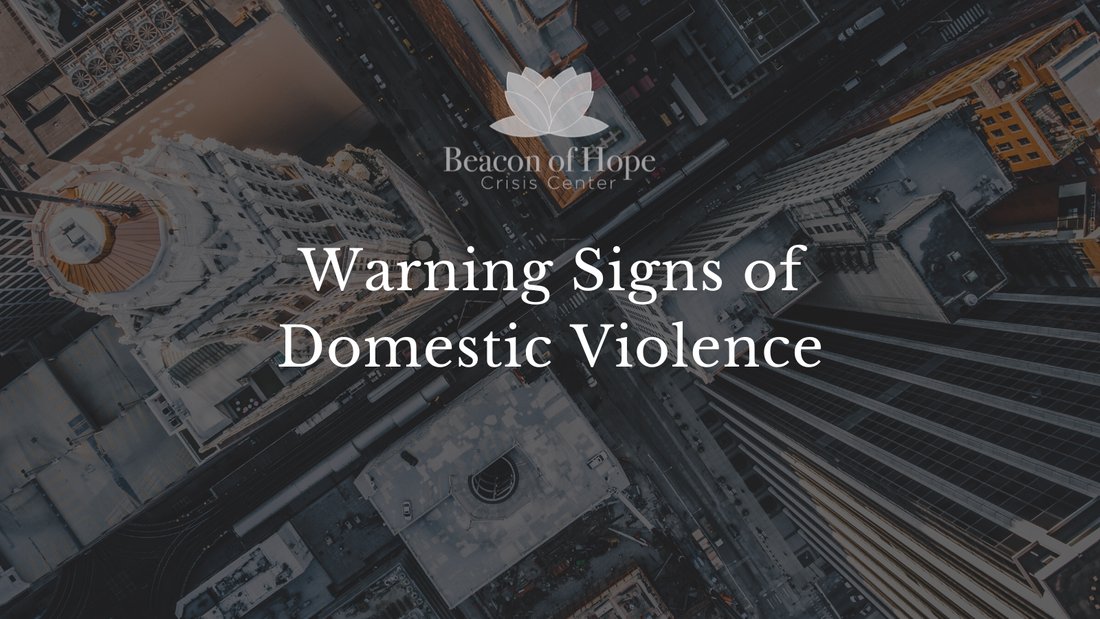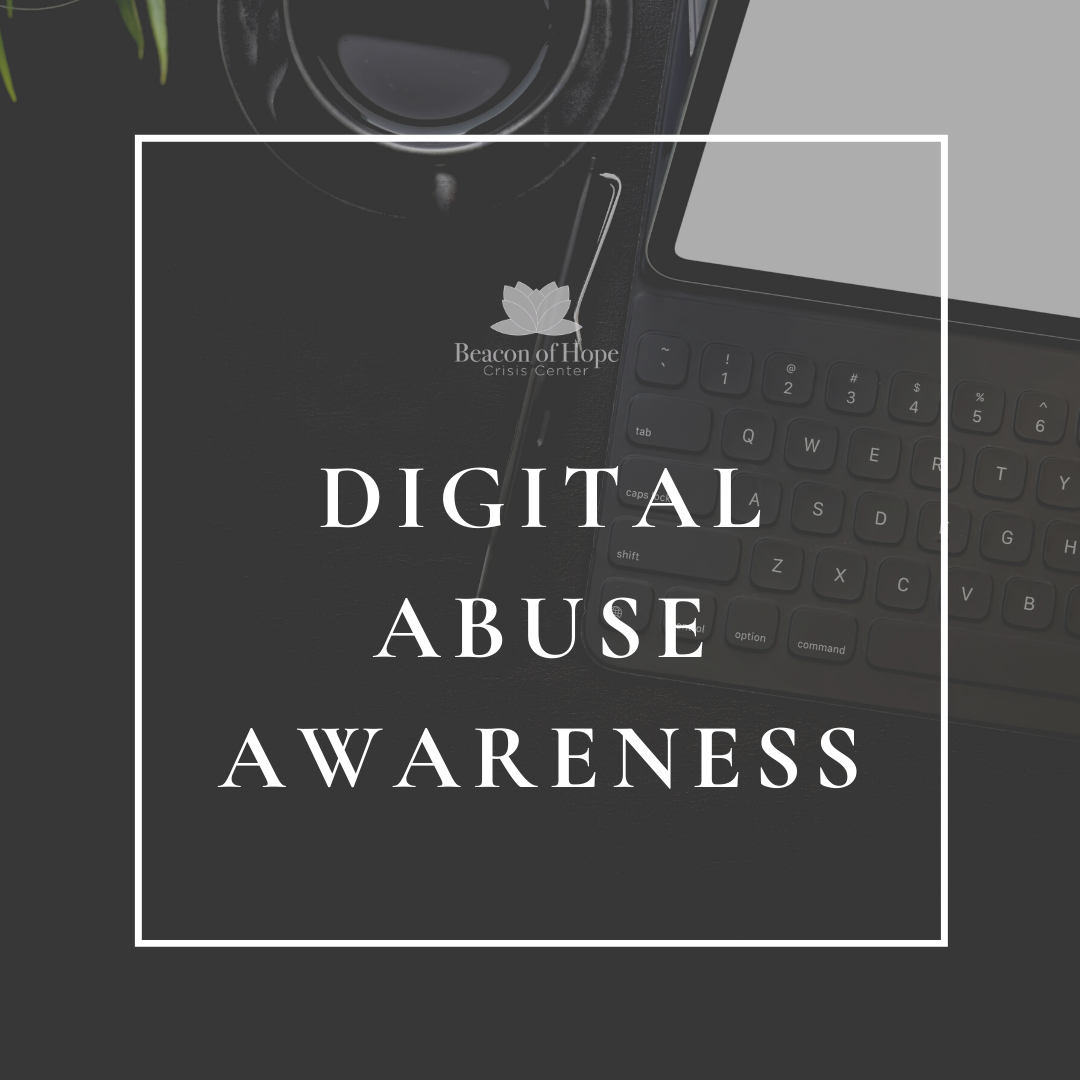|
By: Deni O'Brien Domestic violence itself is a threat to the safety of a victim, but some aggravating circumstances increase their risk of being greatly harmed or murdered. It's important to recognize these warning signs and educate victims on the threat this poses to them and the importance of fleeing. A couple of main indicators of a high lethality risk in abusive relationships are strangulation incidents and weapons in the home.
When a victim of domestic violence calls our crisis line for help, there are typically several things they are trying to solve at once. Often, they call about resources for shelter, long-term housing, employment, childcare, financial support, or filing for a protection order. Because a victim's health is often the last thing on their mind when fleeing and trying to tackle so many other things, we, as Victim Advocates, must take the time to address this with victims and assess for any health needs. When discussing the different types of abuse a victim has experienced, we listen carefully for any disclosure of strangulation or head injuries. Any history of strangulation puts a victim at higher risk of homicide at the hands of their abuser. Of women who experience intimate partner violence, 68% will experience near-fatal strangulation (Training Institute on Strangulation Prevention). The chance of homicide increases by 750% for victims who have experienced strangulation, compared to victims who have never been strangled (Training Institute on Strangulation Prevention). Strangulation means the obstruction of airflow and blood vessels in the neck, meaning loss of consciousness can happen within seconds, and death can occur in minutes. When a victim survives an incident of strangulation, they may experience damage to their throat tissue, memory loss, vision issues, psychosis, brain damage, and even death weeks after the incident due to respiratory complications or blood clots. Typically, victims and their loved ones are unaware of just how seriously strangulation should be taken and that their lives are at risk. Assessing if a victim has experienced strangulation from their abuser and educating them on the impacts can be a matter of life or death. A second thing Victim Advocates are on high alert for is if there are any weapons in the home. As Victim Advocates, we are not just asking if the abuser has threatened the victim with weapons. We want to know if the abuser even owns or has access to firearms. The presence of a gun in domestic violence situations increases the risk of homicide for women by 500%. More than half of women killed by gun violence are killed by family members or intimate partners (National Domestic Violence Hotline). Even after a victim has successfully fled abuse, people willing to commit homicide against their victims often will not be stopped by a protection order. Once we hear any mention of a weapon, safety planning is of utmost importance to protecting the lives of victims and their loved ones. A victim is not able to address something they are unaware of. The more knowledge they have, the better they can understand what this means for their health and safety. If you or somebody you know is experiencing domestic violence, we highly encourage you to reach out to our crisis line and connect with a Victim Advocate. We are here to educate victims, assist with their needs, and change the course of their lives. We want to see every victim we encounter become safe, healthy, and self-sufficient. By: Jenna Krathwohl Domestic violence is extremely common even though it is still seen as a private matter. Domestic violence is more common than diabetes. In fact, it is estimated that 42.5% of Indiana women and 27.9% of Indiana men experience intimate partner physical violence, intimate partner sexual violence, and/or intimate partner stalking in their lifetimes (1). Despite its prevalence, it can be difficult to know how to recognize abuse and what to do if it happens. There is no typical personality of an abuser. In fact, abusers can come in all genders, sexualities, nationalities, abilities, and ages. Anyone can be an abuser, just as anyone can be a victim. However, there are some common traits listed below that domestic abusers may have in common (2).
There are other warning signs that a person may be an abuser. It is important to understand that that these are potential warning signs and it does not imply someone may be an abuser. These are just some of the traits (2).
If you or someone you know is experiencing domestic violence and/or sexual assault, call our confidential hotline at (317) 731-6140. Victim advocates are trained to provide free help, referrals, and resources for those in need. There is hope for survivors. In the case of an emergency, please call 9-1-1. (1) National Center for Injury Prevention and Control (2019). The National Intimate Partner and Sexual Violence Survey: 2010-2012 State Report. Centers for Disease Control and Prevention. Retrieved from https://www.cdc.gov/violenceprevention/pdf/NISVS-StateReportBook.pdf (2) National Coalition Against Domestic Violence (N.D.). Signs of Abuse. National Coalition Against Domestic Violence. Retrieved from https://ncadv.org/signs-of-abuse By: Lauren Frederick While technology offers us a unique way to connect with our friends and family, it can also be used by abusers to maintain power and control. This is recognized as digital abuse and is a form of abuse that is often perpetrated online or with the use of electronic devices such as cell phones, tablets, computers, security systems, etc.
What exactly is digital abuse? According to the National Domestic Violence Hotline, “digital abuse is the use of technology and the Internet to bully, harass, stalk, intimidate, or control a partner.” They also describe it as “a form of verbal or emotional abuse conducted online.” This can be conducted on any social media platform and through texts, calls, and emails. It can envelop your life as digital abuse gives abusers a platform to conduct abuse any time of the day, especially when considering the fact that 79% of Americans spend an average of more than three hours on their phone daily. What does digital abuse look like? Digital abuse comes in many forms. It can include limiting or monitoring a victim’s online activity, including who they follow, message, the posts and content they engage with, and location tracking. It can also involve unwanted messages or posts that are “negative, insulting, or threatening.” Threats might also be made online where the abuser is “sending, requesting, or pressuring you to send unwanted explicit photos,” videos, or sexts. This can lead to blackmailing, which is meant to harm a victim’s reputation, employment options, etc. In some cases, the abuser will create fake social media profiles to impersonate or harass a victim. Another aspect of digital abuse is cyberstalking, a form of stalking in which the abuser uses electronic devices, online activity, and location monitoring to make a victim feel fearful. Abusers might find information about location on apps like Snapchat or “Find My Phone.” They can also find this information through apps with poor security, GPS trackers, cameras, speakers, microphones, and spyware. This behavior is threatening and can make a victim feel like there is no escape. Cyberstalking is intrusive and can impact every area of a victim’s life. What should I do if I am experiencing digital abuse? One of the first steps you should take when experiencing digital abuse is securing all your social media accounts by changing your passwords and utilizing two-factor authorization. Next, investigate your settings and clean up the clutter. You can turn off location sharing on your device, disable Bluetooth when you are not using it, and delete any apps or programs that are not being used. To learn more, speak with a Victim Advocate to complete a personalized safety plan. If you or someone you know is experiencing digital abuse and you would like to talk to an advocate at Beacon of Hope Crisis Center, call our free and confidential crisis line at (317) 731-6140. If you are in immediate danger, please call 911. By: Savannah Tipton We all know someone who has experienced domestic violence, but we may not know who that is in our lives. Survivors walk among us and are often people we are close with including friends, family, and coworkers. It’s difficult to accept this reality but essential to raise awareness that anyone can be impacted by domestic violence. According to the National Coalition Against Domestic Violence, “1 in 3 women and 1 in 4 men have experienced some form of physical violence by an intimate partner.” However, domestic violence is not limited to physical abuse. Other types of abuse include emotional, psychological, spiritual, financial, sexual, and digital. Domestic violence happens daily, and survivors often feel silenced and alone. We want all survivors to know that free and confidential resources are available.
We can all act as an ally to survivors by educating ourselves about domestic violence warning signs and red flags. If you identify warning signs or red flags of domestic violence in your network or your own life, reach out to a local domestic violence agency to discuss next steps and the resources available to you. Talking about domestic violence saves lives. It’s important that we speak up when something does not feel right. Warning Signs of Domestic Violence
Perpetrators of domestic violence are often likable and charismatic. There is no single description for all abusers. They are not always lurking in the shadows or threatening to the outside world as movies might portray. Many abusers get along well socially at work and in their personal lives. Their behavior typically shifts behind closed doors when they are alone with the victim. Most abusers are only violent with their current or past intimate partners (1). They are also extremely manipulative. This includes minimizing the seriousness of the violence, blaming others for their abusive behavior, and breaking down the victim’s self-confidence. Abusers can threaten a victim directly and indirectly including threats of homicide and suicide. Threats and acts of violence are used to take control over the victim. Threats are often made towards friends, family members, children, and pets. A victim might stay in a dangerous situation out of fear for themselves or those they love. “Abusers repeatedly go to extremes to prevent the victim from leaving. In fact, leaving an abuser is the most dangerous time for a victim of domestic violence (2).” Red flags of an Abuser (1)
At Beacon of Hope Crisis Center, we are committed to breaking the cycle while empowering victims and survivors to take back their life. From providing emotional support to safety planning, let us be your advocate. For more information, contact our Confidential Crisis Line: (317) 731-6140. If you are in a life-threatening situation, call 9-1-1 immediately. SOURCE: By: Savannah Tipton We live in an age of technology where nearly every person over the age of 15 has a phone. Not only do we have phones, but we are on them constantly. We enjoy playing games, exploring social media, messaging friends and family, and so on. Many people relate to the daily behavior of checking their phone before going to bed at night and again when they wake up in the morning. Younger children also have access to utilize phones, iPads, tablets, etc. While technology can be a tool for learning and connections, it can also be abused. This constant connection to the outside world can create huge risks to someone’s safety and personal well-being.
Perpetrators of domestic violence and sexual assault often use technology to monitor someone’s online activity, harass, intimidate, threaten, or otherwise control a victim. Victim advocates are available to complete technology safety plans for survivors suffering from digital abuse or harassment. Digital abuse can be used to manipulate both domestic violence and sexual assault survivors. Types of abuse perpetrated through technology:
If you or someone you know is experiencing digital abuse, please contact our confidential crisis line. Advocates are a confidential source of support available to help survivors navigate these kind of situations and can connect you to community resources. Confidential Crisis Line: 317-731-6140 By Katie Foley Life is full of unexpected changes and we often recognize those changes when it happens to those closest to us. What happens if you start noticing negative changes in a loved ones life? What are the signs of these changes?
Maybe you’ve noticed bruises on a friend or maybe they are constantly negative and showing you a significant change in their confidence. Maybe you’ve even noticed a change in their attitude or personality. Their scarf collection is growing. They don’t laugh anymore. They are always checking their phone and letting their significant other know where they are. While you thought they were always happy, you’re now beginning to question if something is wrong. Reality: domestic violence and abuse can happen to anyone. Sometimes, though, problems are pushed under the table or even denied. Noticing the signs of an abusive relationship can be the first step to ending it. If you immediately think of someone in your life that relates to the points below then we encourage you to take the first step and reach out. There is available help and no one should ever live in fear. Change in habits When someone becomes obsessive about updating their partner on their location or daily activities this may be a sign that something is wrong. Other changes in daily routine and habits may bring light to something more going on behind closed doors. For example, your sister used to always put on makeup, get manicures, and workout. Now, all she does is sulk around and seems to have lost self-confidence. It is possible those changes are the result of domestic violence. Constantly on edge Do they fear their partner all of the time? Do they try everything in their power to never make their partner angry? Are they always complaining of never doing anything right? If answering “yes,” then it is time to step in and help them realize that they aren’t helpless, but that they are worthy of help. Physical wounds Bruises. Scratches. Black Eyes. Jammed Fingers. Lacerations. Above are “obvious” giveaways of physical abuse. Realize that abusers are smart, so these wounds could possibly be in hidden places. Take notice and start asking questions. They’re not communicating While this may seem superficial, it’s important to start noticing how they are communicating is it via text, phone calls, and social media. If they no longer are on social media or even less active – you may have your first sign. If you also notice that your loved one has a “phone manager” and isn’t texting you as often or maybe isn’t even allowed to talk to certain people, then it might be time to talk. Faking emotions “You’ll never find someone else that will love you.” The lie above is a sign that your loved one is being manipulated to stay in a bad situation. If you are noticing that they are forcing smiles and laughs – then it could be time to take action. The more they are faking and lying, the more they will be manipulated to a point of serious abuse. If you or a loved one are a victim of feeling these emotions – it’s time to take back your life. At Beacon of Hope Crisis Center, we are committed to breaking the cycle while empowering victims and survivors to take back their life. From providing emotional support to safety planning, let us be your advocate. For more information, contact our hotline at: (317) 731-6140. |
About this blog
This blog is about our domestic and sexual violence crisis center, Beacon of Hope. We hope you find it full of helpful information, motivation, creativity, serious facts and positivity. We hope that it will help you know what is happening in our center, in our community and with our events. We hope you follow our blog in support of our organization and our mission. Archives
October 2024
Categories
All
|
|
CAREER opportunities © 2024 Beacon of Hope Crisis Center Privacy Policy Accessibility Statement Training Portal Login |







 RSS Feed
RSS Feed